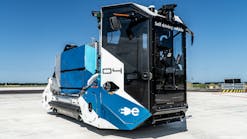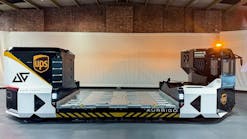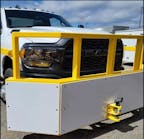By Bill Wilcox, vice president, Phoenix Metal Products Inc.
When I worked on the first passenger stair in Miami to service the maiden flight of the 747 in 1968, I could not believe the size; the height was so much greater than any stair we had manufactured to date.
Before the 747 there were no narrow-body or wide-body — they were just aircraft.
Those years after the 747 brought about many changes to compulsory GSE equipment on the ramp, most types required a broader range of operation.
The norm became “make it go higher, make it go lower.” Then the RJs came and so did the request; “make it go lower and can we still reach a wide-body?”
Today, as we prepare for the arrival of the A380, we are back to “make it larger, make it go higher and can we still reach an RJ?”
This is starting to sound like ladies’ hemlines.
Obviously, this creates a logistical problem for the airlines and a manufacturing problem for the producer. The same can be said for the passenger boarding bridges, lifts and docking equipment manufacturers.
At present Phoenix manufactures seven different height passenger stairs from the fixed RJ stair to the adjustable truck-mounted 747 stairs.
Will one size fit all?
It is not likely any time soon; the airlines and aircraft manufacturers will continue to buy and build aircraft that best fits there needs. As airlines continue to improve their turnaround time, the congestion on the ramp becomes more of an issue and having four stairs at the gate does not help the congestion.
Although the basic passenger stairs have not changed much in the past 40 years, some manufacturers have designed passenger stairs that have increased the height up and decreased the height down. This will help reduce the passenger stairs at some stations.
Also, changing from the old standard conventional cab to the cab-over chassis that has much better maneuverability will help get through the maze around the aircraft. The other factors are diversion landing and aircraft setting on taxiways due to bad weather; this might require a passenger stair to off-load.
There is no easy answer as to what type of stairs are needed, the airlines have done a great job planning the GSE equipment required for the type aircraft to be handled at each station.
If the day arrives that “Beam me up, Scottie” becomes a reality, the problem will be solved.






